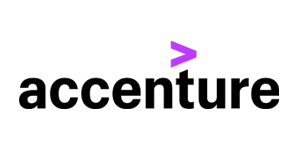- Customer Success Stories
- Safety first - How image recognition can prevent workplace injuries

Safety first - How image recognition can prevent workplace injuries

SAS solution improves workplace safety – image recognition quickly identifies authorized access

Ensure employee
safety and minimize cost
Accenture Latvia achieved this using • SAS® Viya • SAS® Visual Analytics • SAS® ESP Studio • Amazon Web Services
According to international labor organizations, 2.3 million people worldwide suffer from workplace injuries every year. When an employee is performing a high-risk job, it is paramount that employers are taking measures to keep their workers safe. Today, safety is most commonly tracked after the fact using incident reports. The team from Accenture Latvia ATC wanted to increase preventative measures by creating a digital solution to prevent accidents from occurring.
For the SAS® 2020 Hackathon, the Accenture team focused on workplace safety and how to improve safety measures at a construction workplace where protective equipment like a safety helmet is mandated. Using item detection on an image it is possible to check if all employees upon entering the construction site are using safety helmets, and alert immediately if not. At the same time facial recognition is used to identify whether the person is authorized to enter the site.
“The pain and suffering from an accident and perhaps its long-term consequences for the individual worker is the main reason to prevent construction workplace accidents, but for the company, efficiency and productivity are obviously also important aspects. In a world of massive libraries of video materials, we cannot rely on human performed analysis anymore to produce agile and rapid decisions. We wanted to use image recognition and data analysis to prevent accidents at construction workplaces,” says Diana Rimsane, partner at Accenture.
Using data to stop accidents before they occur
To build the database for image recognition the team needed to collect images of every employee entering the construction site and then create a comparison model in SAS® ESP Studio. This allows a door camera to analyze the image of a person trying to enter and can quickly identify whether the person is authorized to access the site.
For the item detection, for example a hard hat, the team uploaded multiple images of the safety equipment item. Images are uploaded to the server and using the YOLO model, only faces with the safety equipment will be recognized.
Using SAS® Viya® the team created a visual dashboard for the employers to assess how many of their employers are following the safety procedures and where there is room for improvement. The dashboard shows how many accidents were prevented, how many total checks were performed, and how many employees were working on any given day.
Companies will be able to stop accidents before they occur. This will ensure employee safety and minimize costs. These costs can come from employee turnover, training time, rehabilitation, and safety inspections. By adding these extra measures at the beginning, employers can adjust their safety training and ensure a safer workplace in the future.
The pain and suffering from an accident and perhaps its long-term consequences for the individual worker is the main reason to prevent construction workplace accidents, but for the company, efficiency and productivity are obviously also important aspects. In a world of massive libraries of video materials, we cannot rely on human performed analysis anymore to produce agile and rapid decisions. We wanted to use image recognition and data analysis to prevent accidents at construction workplaces Diana Rimsane Data visualization engineer Accenture
2.3m
people suffer from workplace injury worldwide
2
ways of using image recognition
2020
Participant in the 2020 SAS® Hackathon
The results illustrated in this article are specific to the particular situations, business models, data input, and computing environments described herein. Each SAS customer’s experience is unique based on business and technical variables and all statements must be considered non-typical. Actual savings, results, and performance characteristics will vary depending on individual customer configurations and conditions. SAS does not guarantee or represent that every customer will achieve similar results. The only warranties for SAS products and services are those that are set forth in the express warranty statements in the written agreement for such products and services. Nothing herein should be construed as constituting an additional warranty. Customers have shared their successes with SAS as part of an agreed-upon contractual exchange or project success summarization following a successful implementation of SAS software. Brand and product names are trademarks of their respective companies.

